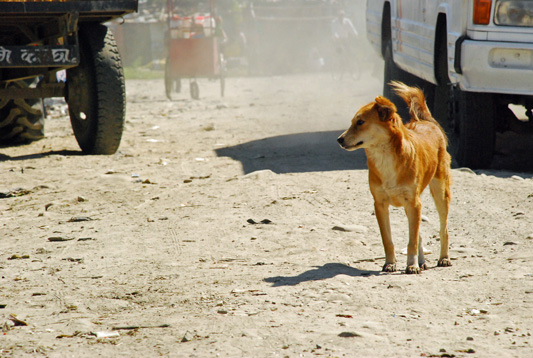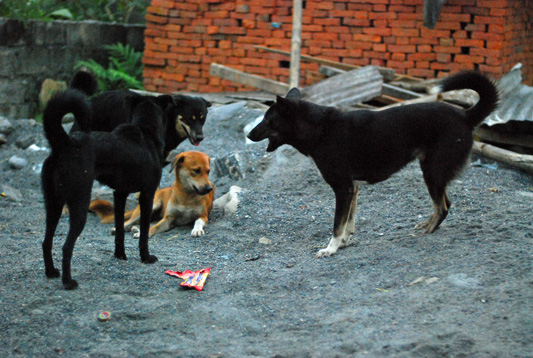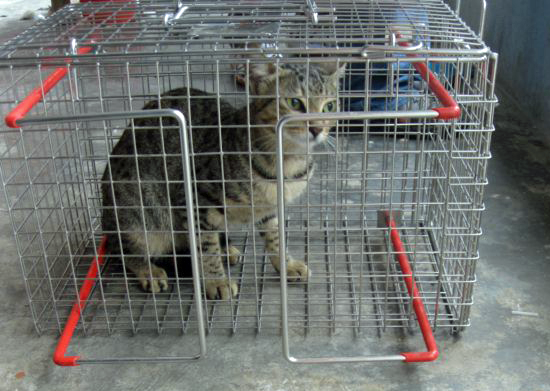
|
 |
|
|
|
|
... please click on photos to enlarge
Street DogsThe term street dogs is widely used to describe the animals seen on the streets on many developing countries. It encompasses a variety of dogs which range from those which are owned and allowed out for some or all of the time to those whose contact with humans is occasional and often hostile. A further complexity to the term is that some dogs are permanently taken from the streets and kept inside compounds or houses.
In Nepal most of a neighbourhood’s inhabitants will recognise the individual dogs that live among them even if they choose to do no more than regard them as part of the street furniture.
Animal Sacrifice
This is still widely practised throughout Nepal, both at festivals and to mark notable occasions, and it is carried out publicly.
Cats
There are far fewer cats than dogs in Nepal although every town appears to have a colony. As with the street dogs some well intentioned individuals take responsibility for one or more cats, though again, as with the street dogs, this does not guarantee the animals a good life. HART neuters as many cats as possible both in the towns and in the camps.
Data
The information gathered from household surveys, from the dog censuses, and from our mass anti-rabies vaccination, neutering and treatment programmes has been passed to Dr Jenny Stavisky and Dr Martin Downes at the University of Nottingham School of Veterinary Science and Medicine.
|
|
Himalayan Animal Rescue Trust | Hospital Marg, Matepani-12, Pokhara, Nepal | Govt Reg No: 248/066/067
|
|



